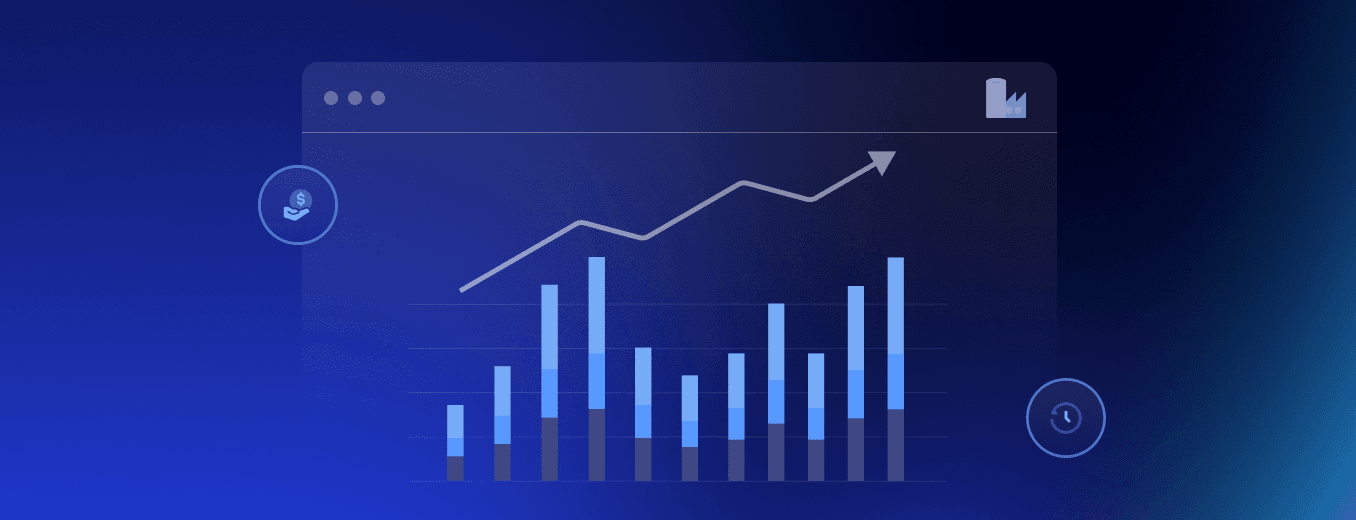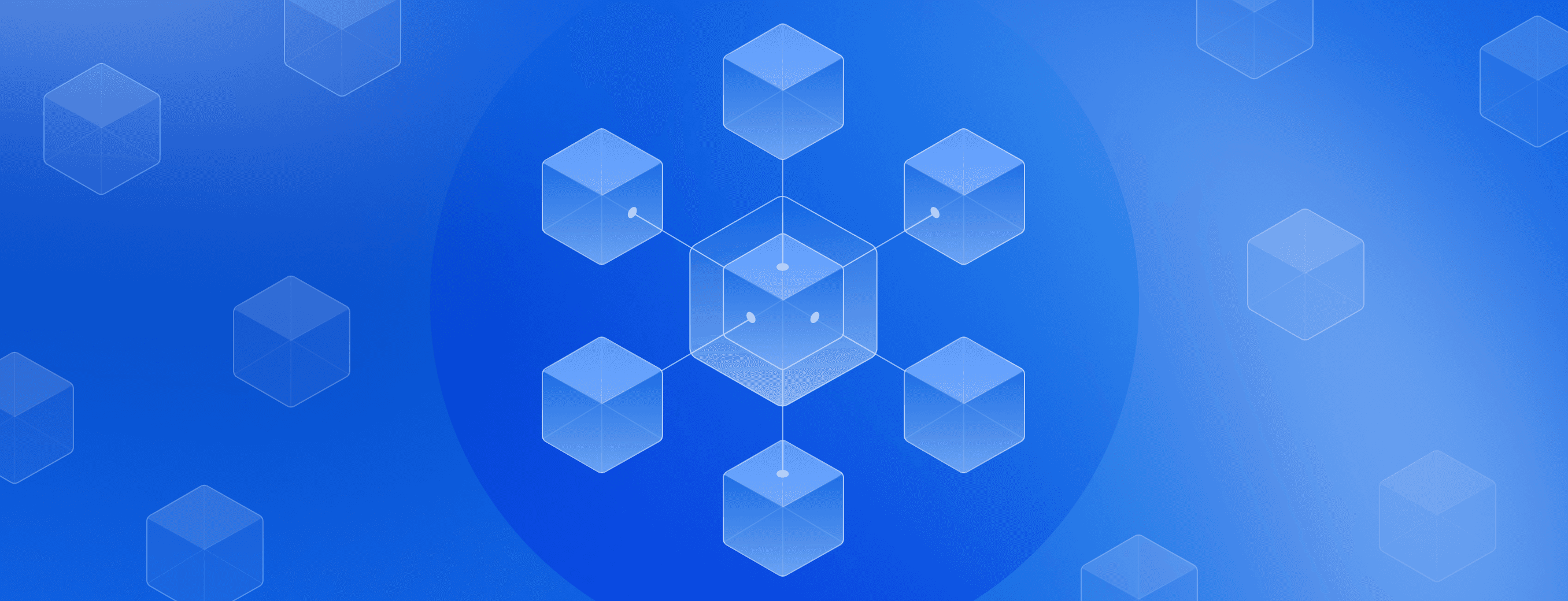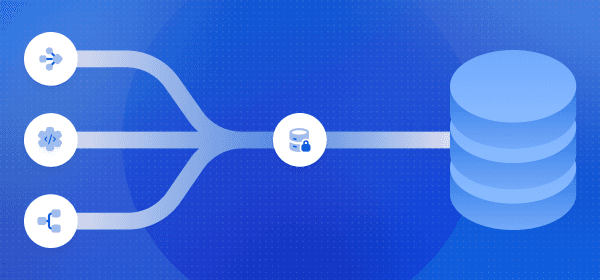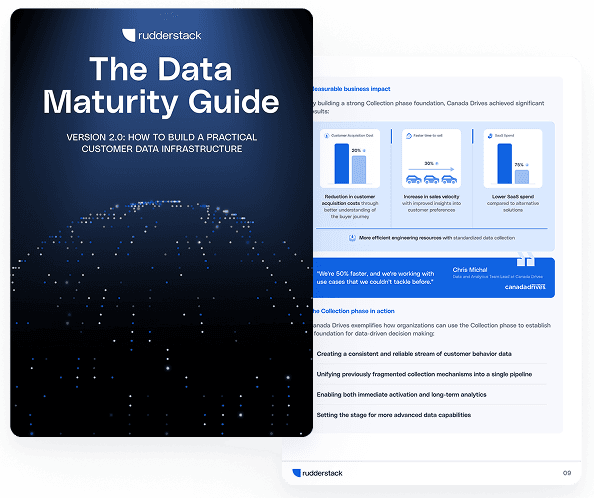Understanding Azure Data Factory pricing: A 2025 guide

If you've ever tried to estimate cloud data integration costs, you know it's not as simple as it looks. Azure Data Factory pricing can surprise you with hidden charges if you don't understand how each part of your pipeline is billed. Many organizations discover unexpected costs from activity runs, data movement operations, and idle compute resources only after their monthly invoice arrives.
What really drives your monthly bill, and how can you control it before costs spiral?
This guide breaks down Azure Data Factory pricing components—from orchestration fees and DIU consumption to integration runtime expenses and monitoring charges—so you can plan with confidence and avoid surprises. We'll examine real-world scenarios, cost optimization strategies, and provide actionable insights to help you maintain budget predictability.
Main takeaways:
- Azure Data Factory pricing is usage-based, with costs driven by pipeline orchestration, data movement (DIUs), transformation compute (vCore-hours), and monitoring activities
- Pipeline frequency, data volume, and transformation complexity are primary factors that impact your monthly Azure Data Factory bill
- Optimizing costs requires strategies like auto-pausing idle compute, batching pipeline schedules, compressing and partitioning data, and leveraging reserved capacity for predictable workloads
- Monitoring your spend with Azure Cost Management and designing parameterized, reusable pipelines are essential for sustained cost efficiency
- For organizations seeking simpler, more predictable data integration pricing, alternatives like RudderStack can provide transparent, event-based cost structures
What is Azure Data Factory?
Azure Data Factory is Microsoft's cloud-based data integration service that helps you create, schedule, and manage data pipelines at scale. It operates on a usage-based pricing model rather than a flat fee structure.
What Azure Data Factory means for your organization is the ability to build ETL (Extract, Transform, Load) and ELT (Extract, Load, Transform) workflows without managing infrastructure. You pay only for the resources you consume during pipeline execution.
Microsoft Azure Data Factory connects to various data sources, both in the cloud and on-premises. This flexibility makes it popular for enterprises with complex data environments.
Key cost components of Azure Data Factory
Understanding Azure Data Factory pricing requires knowledge of its core billing elements. Each component contributes differently to your monthly costs.
Pipeline orchestration costs
Pipeline orchestration fees apply whenever an activity runs within your data pipeline. Each activity execution counts as a billable event, with Microsoft charging $0.005 per activity run regardless of complexity or duration.
Your costs increase with the frequency of pipeline runs. Scheduled, manual, and event-triggered pipelines all contribute to your bill. For example, a pipeline with 5 activities running hourly generates 3,600 billable executions monthly (5 activities × 24 runs × 30 days), resulting in $18 in orchestration costs alone.
Even failed activities incur charges, so error handling and pipeline reliability directly impact your monthly expenses. Debug runs during development count toward your bill as well, making efficient testing practices essential for cost management.
Data integration units
Data Integration Units (DIUs) power data movement operations. Copy activities use DIUs to transfer data between sources and destinations.
DIU consumption varies based on:
- Data volume processed
- Requested parallelism
- Complexity of data transformations
- Cross-region data transfers
Data transformation flows
Visual transformations run on Spark clusters, and you're billed for the total vCore-hours they consume. Costs rise when clusters run longer or use more cores, and you'll still be charged if a cluster sits idle without auto-termination enabled.
Integration runtime costs
Integration runtimes provide the compute environment for your activities. Azure Data Factory offers three types:
- Azure-hosted (serverless) - Fully managed by Microsoft with automatic scaling; billed based on actual DIU consumption during execution
- Self-hosted (on your infrastructure) - Runs on your own hardware; no direct Azure charges for runtime, but requires maintaining on-premises servers with associated power, cooling, and management costs
- Azure-SSIS (for SQL Server Integration Services) - Dedicated virtual machines that run SSIS packages; billed hourly based on node size (D1v2-D64v3) and number of nodes in your cluster
Each runtime type has different pricing implications. Self-hosted runtimes may require additional infrastructure costs that don't appear on your Azure bill but impact your total cost of ownership. Azure-SSIS runtimes typically have the highest direct costs but offer compatibility with existing SSIS investments.
Monitoring and management
Azure Data Factory Studio provides monitoring capabilities that generate small but cumulative charges. These include:
- Reading pipeline run records
- Accessing activity logs
- Retrieving trigger histories
Extensive debugging sessions can unexpectedly increase your Azure Data Factory costs if not managed properly.
Expand your data knowledge
Understanding ADF costs is just one part of managing your data stack effectively. Learn how modern analytics and collection strategies shape smarter pipelines.
Pricing triggers and factors to monitor
The triggers you choose significantly impact your Azure Data Factory pricing. Understanding these factors helps prevent billing surprises.
Common trigger types:
- Schedule-based: Run pipelines at specific times (hourly, daily)
- Event-based: Execute pipelines when events occur (new files arrive)
- Manual: Start pipelines on demand for testing or ad-hoc processing
Pipeline complexity also affects costs. More activities per pipeline mean more billable executions.
Data volume and processing frequency directly correlate with higher bills. Real-time data pipelines cost more than daily batch processes due to their execution frequency.
Data factory operations
- Read/write operations: Creating, reading, updating, or deleting ADF entities (datasets, linked services, pipelines, integration runtimes, and triggers).
- Pricing: $0.50 per 50,000 modified or referenced entities.
- These operations accumulate during development cycles when you're frequently modifying pipeline configurations or during automated deployments across environments.
- Monitoring operations: Getting or listing pipeline, activity, trigger, and debug runs.
- Pricing: $0.25 per 50,000 run records retrieved.
- Costs increase with monitoring frequency—dashboards that auto-refresh every few minutes can generate significant API calls over time.
- Cost impact: Every action in the data pipeline generates cost, but this factor is usually minor since 50,000 operations represent a very high threshold.
- Enterprise environments with hundreds of pipelines and multiple developers can reach this threshold faster than expected, especially during intense development phases.
- Microsoft's billing combines all operations across your ADF instances, so distributed teams working simultaneously contribute to the same operation count.
Inactive pipelines
Inactive pipeline costs apply when pipelines exist in your environment without associated triggers or executions for 30+ days. Microsoft charges $0.50 per inactive pipeline per month after this grace period.
This expense can accumulate significantly in development environments where test pipelines are created but never properly decommissioned. Regular pipeline inventory audits can identify and remove these cost liabilities before they impact your monthly bill.
Real-world pricing scenarios
Examining practical examples helps clarify how Azure Data Factory pricing works in different contexts.
Low-frequency simple pipelines
A basic daily ETL pipeline might extract sales data, apply simple transformations, and load it into a data warehouse. This scenario typically involves:
- One pipeline run per day
- Standard integration runtime
- Minimal monitoring needs
- Small to medium data volumes
Cost drivers:
- Pipeline orchestration: 30 activity runs monthly (1 per day)
- DIU usage: Low, due to infrequent data movement
- Transformation costs: Minimal if using simple activities
This scenario represents the lower end of Azure Data Factory costs, making it budget-friendly for smaller organizations.
High-frequency complex workloads
Consider an IoT data processing pipeline running every 5 minutes with multiple transformation steps. This scenario includes:
- 288 pipeline executions daily
- Cross-region data movement
- Complex transformations using Mapping Data Flows
- Extensive monitoring requirements
Cost drivers:
- Pipeline orchestration: 8,640 activity runs monthly (288 per day)
- DIU usage: High, due to frequent data movement
- Transformation costs: Significant vCore-hour consumption
- Monitoring costs: Elevated due to frequent run record retrievals
This high-volume scenario can lead to substantial ADF cost if not optimized properly.
Sources like Orchestra illustrate how different pipeline designs—from simple daily ETL jobs to complex, high-frequency workflows—can lead to widely varying cost profiles in Azure Data Factory.
Simplify your integration workflows
Azure Data Factory is powerful but complex. RudderStack provides a transparent, event-based model for moving customer data, without hidden costs or idle compute.
7 strategies to optimize Azure Data Factory costs
Industry experts recommend combining proactive monitoring with transformation tuning and pipeline consolidation to prevent cost overruns during migration and optimization cycles.
To avoid billing surprises and keep your pipelines cost-effective, here are seven proven strategies for optimizing Azure Data Factory spend.
1. Eliminate wasted compute capacity
Unused compute resources waste money. Set auto-pause timeouts for Mapping Data Flows to prevent idle clusters from running unnecessarily.
Monitor your integration runtime utilization regularly. Right-size resources to match your actual workload requirements rather than provisioning for peak loads.
2. Schedule pipelines efficiently
Batch processing often costs less than real-time processing. Consider whether your business truly needs 5-minute intervals or if hourly updates would suffice.
Align pipeline schedules with your business SLAs rather than defaulting to the highest frequency possible. This simple change can dramatically reduce data factory pricing.
3. Compress and partition data before movement
Data compression significantly reduces transfer volumes and associated costs by minimizing the bytes transmitted across networks. In practice, techniques like GZIP or Snappy compression, strategic parallel execution, and early filtering of rows and columns are powerful levers for driving down DIU and egress costs in ADF.
Implement efficient columnar file formats like Parquet (which offers 75-90% compression rates) or Avro (ideal for schema evolution) instead of verbose CSV or JSON formats that consume more storage and bandwidth.
Strategic partitioning of large datasets (by date, region, or customer segments) enables true parallel processing across multiple compute nodes, which can reduce overall execution time and lower DIU consumption proportionally. Azure Data Factory automatically distributes partitioned workloads across available resources for maximum efficiency.
4. Leverage reserved capacity
For predictable workloads with consistent utilization patterns, Azure offers reserved capacity options that can substantially reduce costs compared to standard pay-as-you-go pricing. These reservations apply to Integration Runtime and Mapping Data Flow resources.
Reserved capacity requires 1-year or 3-year upfront commitments but delivers cost savings on consistent workloads (with 3-year commitments providing maximum savings).
Before committing, evaluate your usage patterns using Azure Cost Management reports to identify stable baseline consumption that justifies reservation investments versus maintaining flexibility with on-demand pricing.
5. Track spend with Azure Cost Management
Azure continually enhances its FinOps tooling—adding features like cost forecast assistance, Copilot nudges, and improved allocation tracking—to help teams identify inefficiencies before they grow into budget overruns.
Azure Cost Management provides visibility into your spending patterns. Use it to:
- Monitor daily/weekly consumption
- Set budget alerts
- Identify cost anomalies
- Tag resources for departmental billing
Regular cost reviews help identify optimization opportunities before small issues become expensive problems.
6. Design lean, reusable pipelines
Each pipeline adds to your management overhead and potential costs. Create parameterized pipelines that can handle multiple similar workflows instead of building separate pipelines for each data source.
Fewer pipelines mean:
- Less orchestration overhead
- Simplified monitoring
- Reduced maintenance effort
- Lower overall costs
7. Use parameterization and dynamic pipelines
Parameterization allows one pipeline to process multiple datasets through configurable inputs that control execution behavior. Instead of creating ten table-specific pipelines with redundant logic, build one parameterized pipeline that handles all ten tables by passing table names, query conditions, and connection strings as runtime variables. This reduces maintenance overhead and lowers execution costs.
Dynamic content in pipelines adapts to changing conditions without requiring manual intervention or additional pipeline variants. By using expressions like @pipeline().parameters and @activity().output, pipelines can automatically adjust processing logic based on input data characteristics, system conditions, or upstream activity results.
This enables intelligent data routing, conditional processing, and error handling without creating multiple specialized pipeline versions.
Cut costs and streamline your pipelines
If ADF pricing feels unpredictable, RudderStack offers a simpler way to integrate and deliver data with real-time pipelines and transparent pricing.
Simplify your data integration costs with RudderStack
Azure Data Factory pricing follows a consumption-based model where you pay for what you use. Understanding the key cost drivers helps you plan and optimize your spending.
While Microsoft Azure Data Factory offers powerful capabilities, its multi-dimensional pricing can be complex to manage. Organizations seeking more predictable costs for real-time data pipelines might consider alternatives.
RudderStack provides a transparent, event-based pricing model that simplifies budgeting for customer data pipelines. With built-in privacy controls and direct warehouse integration, RudderStack offers an efficient alternative to traditional ETL tools.
Request a demo to see how RudderStack can streamline your data integration needs.
FAQs about Azure Data Factory pricing
What is the basic pricing structure for Azure Data Factory?
Azure Data Factory pricing is consumption-based with charges for activity runs, data movement (DIUs), transformations (vCore-hours), and operations like monitoring and management.
How does Microsoft calculate Azure Data Factory costs for data movement?
Microsoft calculates data movement costs using Data Integration Units (DIUs), which vary based on data volume, complexity, and whether data crosses regions.
Can I estimate Azure Data Factory pricing before implementation?
Yes, you can use the Azure Pricing Calculator to estimate costs based on expected pipeline frequency, data volumes, and integration runtime requirements.
Does Azure Data Factory have a free tier?
Azure Data Factory doesn't offer a permanent free tier, but new Azure accounts may receive credits that can be applied to ADF workloads during the trial period.
How can I reduce my Azure Data Factory costs for high-volume workloads?
Reduce costs by batching data operations, using efficient file formats, leveraging reserved capacity, and scheduling pipelines at appropriate intervals rather than maximum frequency.
Published:
October 7, 2025

Salesforce data enrichment: Best tools for 2025
Without proper enrichment, Salesforce customer records can become stale, incomplete, and increasingly disconnected from reality. Learn about the best tools for real-time syncing, identity resolution, and deep integration with modern data stacks.

CIAM: What is customer identity and access management?
Learn how CIAM secures logins, improves UX, and enables compliance and personalization at scale—and how unifying CIAM data with your stack drives safer, smarter customer experiences.

Deterministic vs. probabilistic models: A guide for data teams
This article compares deterministic vs probabilistic identity models for data teams. See when to use each, how they differ on accuracy, adaptability, and compliance, and how RudderStack Profiles enables a hybrid, warehouse-native approach.





